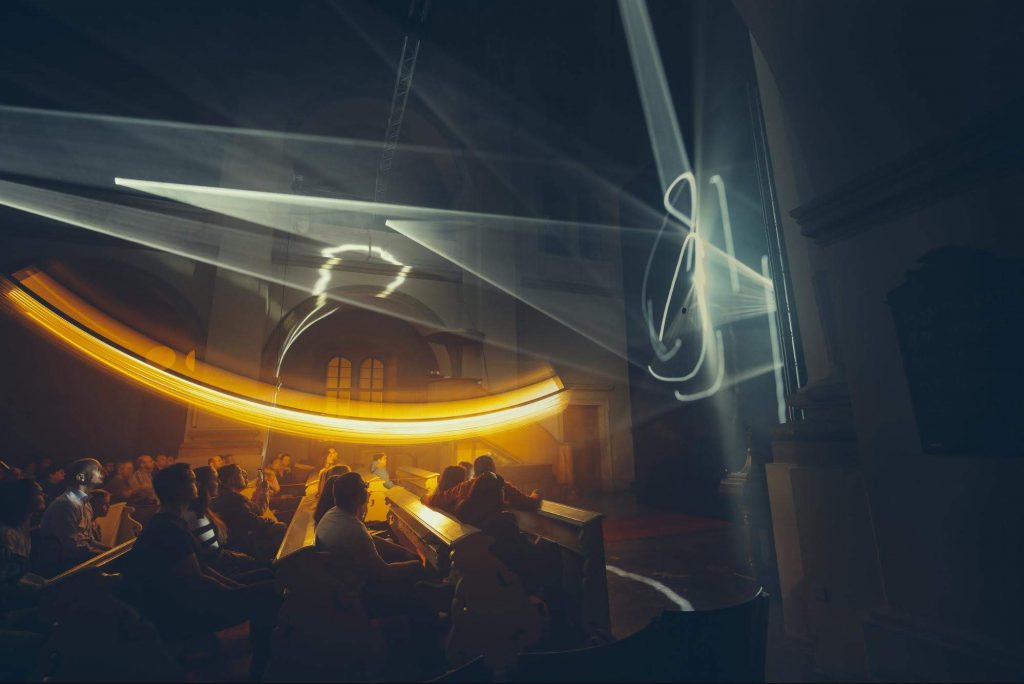Prague’s Mesmerizing Signal Festival, 2018
Exploring the annual celebration of light art and emerging technologies

Prague abounds with historic quaintness. Hotel lobbies are traditionally opulent and grand, established restaurants serve time-honored food paired with Czech dumplings and beer, streets bear the names of residents from times gone by, and the magnificent Prague Castle above the city speaks of the royalty that once presided over the country.
It is with this classic backdrop as a canvas that Prague hosts something intriguing and arguably out of character: an annual show of modern lights and technology, known as Signal Festival, which is now in its sixth year. Over four evenings this past weekend, Signal presented 22 art installations across three routes in the city—the center, Vinohrady and, for the first time, Karlin.
We went to Prague to check out this celebration of light art, urban space and emerging technologies—and the following six experiences captivated us the most.

IRIS, SOFTlab
Installed in the historic Mirror Chapel of the Prague Klementinum, IRIS was an interactive installation by NYC-based design studio SOFTlab. This US team has been recognized for projects with MoMa, The New York Times and Columbia University. Here in Prague, a gaming console overhead tracked the movements of festival goers inside an open circle and this triggered the rotation of a series of vertical mirrors that borders the circle. Standing in the middle of the circle, you could observe the different facades of the Klementinum as the mirrors rotated to reflect their architecture.

Unrest, Verge (Jana Mercogliano)
Mercogliano, otherwise known as Verge, is an architectural designer working with digital technologies and computational logistics. In Prague, she installed a floating installation on the banks of the historic Vltava River; her art was a bright radiance and instant attraction against the evening glow of buildings. In line with the theme of interactive technologies, the many light points on the installation trembled in reaction to the movement of water in the river, as if moving and floating like a living organism would.

Sky on Earth, Richard Loskot and UAII Studio
Czech artist Richard Loskot was inspired by storm clouds illuminated by light. In his installation in the beautiful Clam-Gallas palace, he took visitors through giant clouds injected with pulsating colors and deep bass sounds. What’s more, you could touch the clouds, walk into them, and they nevertheless keep rejuvenating and forming throughout the night.

About Being in a Herd, Ivan Kafka
Ivan Kafka is known for being a pioneer in site-specific installation in the Czech art world and represented the Czech Republic at the Venice Biennale. Here, he placed close to a hundred direction signs in neat rows and covered them with a reflective sheet. Spotlights shone overhead, and every sign reflected the light. Walking through it, you felt like a deer caught in headlights, meandering through a crowd that is radiantly aglow. The result is a feeling of haptic community.

Rococo, Guillaume Marmin
Guillaume Marmin transformed the Colloredo-Mansfeld Palace with 124 projectors, customized and developed by Marmin himself, to form a large and immersive set installation. In a vast, dark room with historical art and high-arched roofs, Marmin’s light architecture offered a modern, minimalist contrast to the old walls. Accompanying music was composed exclusively for the installation by the French composer Philippe Gordiani. (And we can attest it was fun to dance to at the end of the night.)

Organik, Struny Signalu
Organik combined musical dramaturgy with digital visuals to create a dramatic soundscape with classical church organs and cosmic sounds. The audience, seated on the pews, watched as sweeping digital lights bounce on and off a large swinging pendulum in the center of the church. In front, a mirror covered the wall and reflected to the back, making the church look like an infinitely large space; the pulsating beams that shined through seemed to reach limitless depths. The church organ itself is played live by singer and composer Katta, who emerged at the end of the performance to lend a face to the music.












